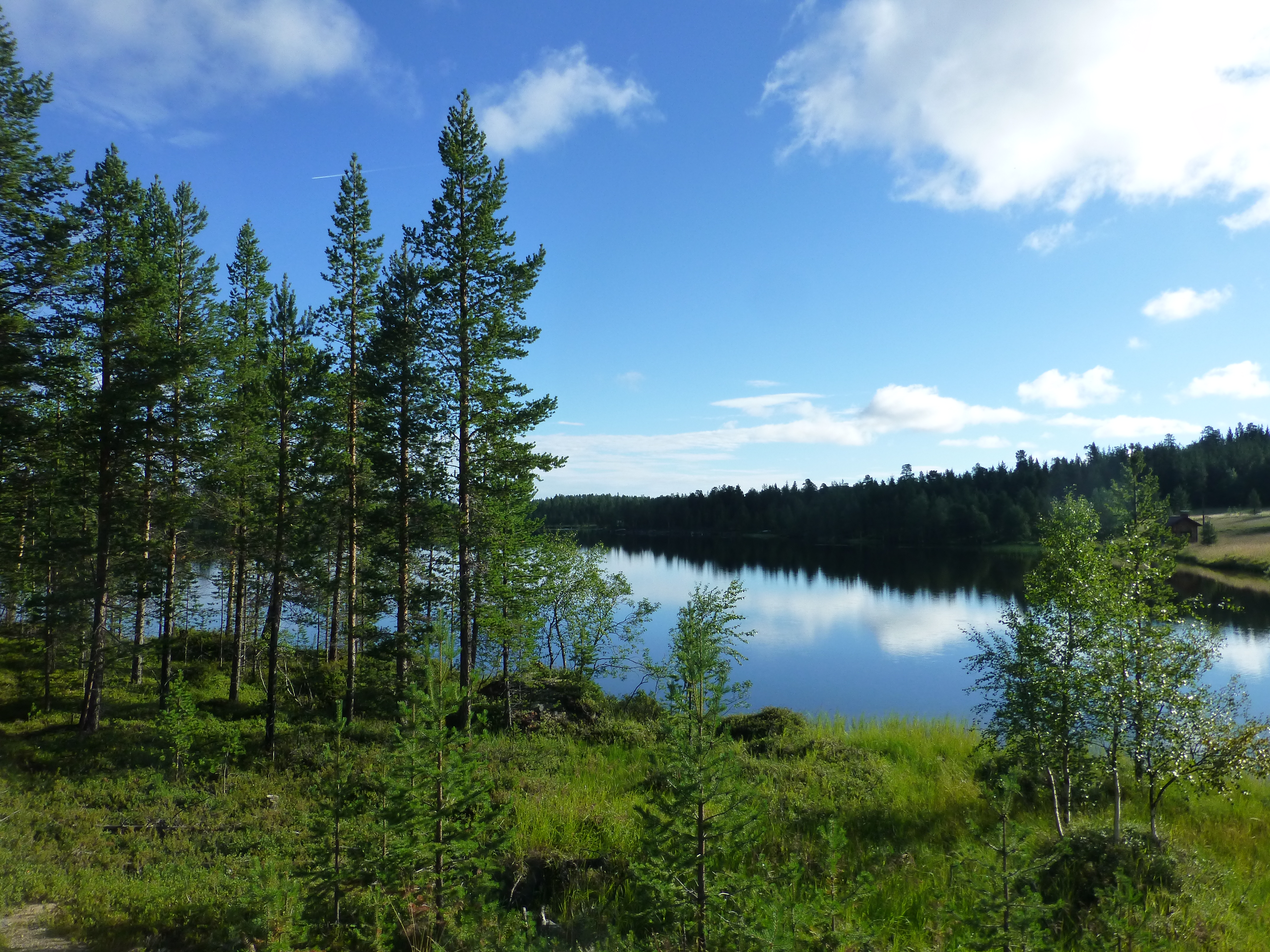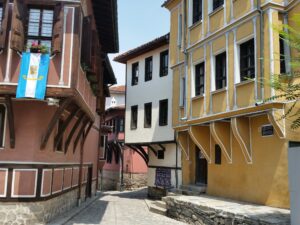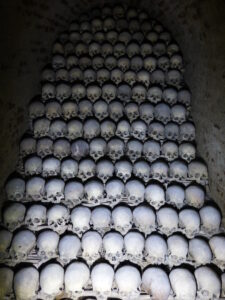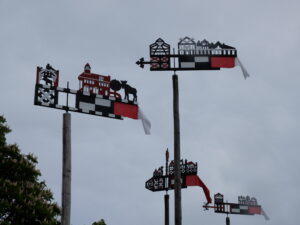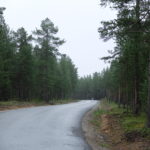
For kilometer after kilometer, the landscape always seems the same. Pine trees and lakes. Lakes and pine trees.
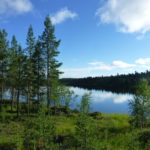
Driving the eastern side of the country – Lakeland in the south, Lapland above the Arctic Circle in the north, or what we called Middle Land in between – the Finnish landscape has surprised us with a mind-dulling, though often pretty, sameness.
Pine trees and lakes. Lakes and pine trees.
In the south, the trees adorn flat land or small hills. In the middle, the horizon reveals a surprising number of mountains that offer ski slopes, often descending toward a lake and always carpeted with pine trees. In Lapland, the pine covered hills become gentler again and the lakes perhaps less frequent, though large ones crowd the landscape even here.
Admittedly, the forests are not all pine. They’re sprinkled with spruce as well as some deciduous trees like white barked birch trees. The leafing trees apparently display some delightful colors in the brief Finnish fall. But the forests are mostly pine, so the landscape must remain green throughout the winter…at least when not blanketed in snow.

Yet little of these piney woods, if any, is primordial growth. Nearly all of it is planted for harvesting in a few decades. The trees stand in rows and columns, precise as the old communist military on May Day…until they are cut down in their prime. Open spaces of newly cleared pine trees look like the remains of a battle won by the tree cutters. The remnants of root balls and tree limbs jut out at all angles.
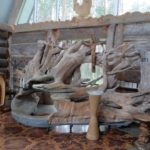
Forestry indeed has been a dominant industry here going back centuries. Whether through ship building, tar production, building products, or furniture, the forests here have provided big money. Unsurprisingly, Finland’s woodsiness has helped foster the design excellence of Finnish furniture and related household products. Finns had a lot of wood to work with. We had the chance to visit the chapel designed and adorned by Eva Rynnanen, whose organic designs and primitive style seemed to evolve out of the sinuous character of wood itself. Though pine production is obviously strong in Finland still, more modern skills like technology (think Nokia) and the opportunities for tourism have surged.
Despite the impression of pines everywhere, there is quite a bit of farmland, hectares upon hectares cleared of trees ages ago and now best used for growing crops like the silky green grains we saw crowding the fields or golden rapeseed. But these seem just interruptions in the main visual event. The rest is pine.
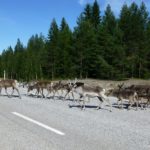
Lakes and pine trees. Pine trees and…oh my god, you yell, as the brakes screech… reindeer. Though owned by local ranchers, including the Sami people above the Arctic Circle, free range reindeer lope loosely across and along the road, as if they owned it. In a group, the leader warily eyes your car, but keeps on his intended path as if you were no threat at all. Those yellow signs of warning as you cross the border to the upper part of Finland now make sense. These guys will put some serious hurt on your car if you don’t stay alert.
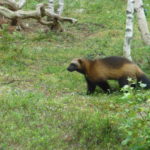
Other animals are more likely to prowl in the piney back woods, like wolverines and foxes (toward the south) or elk, moose, and bear (toward the north). You have to know where to go – or what company to sign up with – to have a chance of seeing any, as we did. That explains the few businesses that offer hides in which you can await and view these animals.
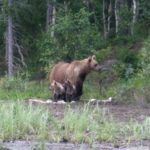
The bears’ habitat straddles Finland and Russia, so you need to go near the border to see them. Oddly, they hibernate in Russia over the winter, then find good forage (and give birth) in Finland during the summer…much like a host of wealthy Russians that bought homes in the evergreen forests decades ago.

On the road and even in much of the back country, you could readily presume there was little other than pine forest here. You don’t realize, until you look at a map or head off the main roads, how waterlogged the countryside is. Saimaa itself, a part of Lakeland, offers around 1700 square miles of lake water dotted by 5500 islands of all sizes. Whether the roads string together larger islands or occupy forested strips, the lakes are typically just out of sight beyond rows and rows of pines. Paradoxically, in the north – where the terrain turns hillier, lakes become fewer, and trekking opportunities abound – the roads tend more to pass along lakes.
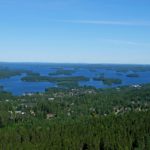
In Lakeland, you can’t even hike very much because there is so much water. Tens of thousands of years ago, glacial ice clawed its way forward and then back along Finland and left these big pools behind. And the available slices of land tend to be roads, not trails. The towns – like Savonlinna or Kuopio – have grown up on some of the largest or hilliest of these islands, or those easier to connect around and across the lakes. The smaller towns are mostly waterlogged in name as well, with endings like lahti (bay) or jarvi (lake) or vesi (water) or – rising above the waters – saari (island) or hill (maki). Before any bridges, residents would cross the lakes near to towns on long boats for Sunday prayers or market days. Even now the roads often end abruptly, marked by a warning sign that shows a car tipping over the edge, at the free ferries that add connections across the waters.
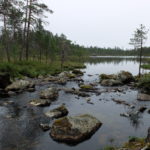
If it’s all so much the same, what is the attraction here? For even putting aside the many hunters and fishers, holidaying Finns stream here in cars and caravans for hiking and boating. They come for the plentiful national parks, natural areas and wilderness kept apart from commercial use. Family members, old and young, seem to love the outdoors, especially camping. We’ve seen groups with three generations on the trails carrying packs to one of the spacious Finnish backpacker huts or open campgrounds. Joining them for the pleasant temperatures around 20C are many Europeans. We’ve already met a surprising number of Italians and French on our travels, who are escaping their summer heat.
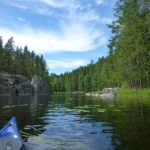
On the water, you can boat in various ways past – yes, pine covered – islands and along reed-filled passages connecting lake to lake. It’s a serene and pristine landscape, with watery national parks limited to unmotorized craft.
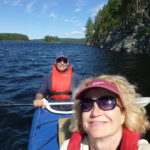
In the long, golden light of the afternoon and evening, even the pines gleam in special ways and the often glassy waters send sparkling reflections of the land around them. The large lakes change character completely into a splashy adventure when the winds puff up the lake water into its own peaks and valleys.

In the middle land and north, rivers predominate, either frothy as rapids through rock canyons or twisting lazily through forested passageways. The splendid hiking trails meander from hut to hut – through the unharvested forests along those river embankments, or up scrub-covered ridges and down piney or boggy birch valleys. But, even here, large lakes occupy huge portions of the landscape, around whose bays the trails arc and bend.

What was mind-numbingly repetitive along the Finnish roads becomes – at the slow pace of kayak or foot – wild, open and endlessly engaging in the Finnish backcountry.
But we’re only part way through Finland. We have not yet seen the western section along the border with Sweden or across the bay from it. There, we expect to drive by pine trees and ocean, ocean and pine trees. If so, at first it might seem repetitive, but slowly reveal so much more.
(Also, for more pictures from Finland, CLICK HERE to view the slideshow at the end of the Finland itinerary page.)


